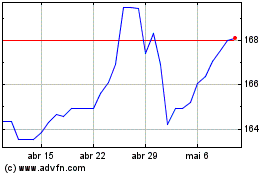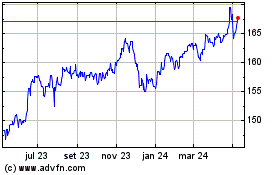Germany's GDP Growth Rises On Exports, Investment
23 Novembro 2017 - 5:15AM
RTTF2
Germany expanded at a faster pace in the third quarter on robust
foreign demand and investment amid weak private consumption,
official data showed Thursday.
Despite political uncertainty, private sector activity growth in
the largest euro area economy accelerated in November driven by a
pick-up in manufacturing, a closely watched survey revealed
today.
Gross domestic product grew 0.8 percent sequentially, faster
than the 0.6 percent expansion logged in the second quarter and in
line with the preliminary estimate, according to detailed report
from Destatis.
Year-on-year, GDP climbed calendar-adjusted 2.8 percent,
following the 2.3 percent growth seen a quarter ago.
The expenditure-side breakdown of GDP showed that private
spending slid 0.1 percent, reversing a 0.9 percent rise a quarter
ago. At the same time, government expenditure remained flat.
Gross fixed capital formation growth eased to 0.4 percent from
1.5 percent in the preceding period. Capital formation was up
especially in machinery and equipment, by 1.5 percent but it fell
slightly by 0.4 percent in construction.
Export growth climbed to 1.7 percent from 1 percent, while
growth in imports eased to 0.9 percent from 2.4 percent. As a
result, the balance of exports and imports had a positive effect on
GDP growth.
Data from IHS Markit showed that Germany's flash composite PMI
climbed more-than-expected to 57.6 in November from 56.6 in
October. The expected reading was 56.7.
The manufacturing sector continued to lead growth with the
strongest increase in production volumes since April 2011.
The factory PMI rose to an 81-month high of 62.5 from 60.6 in
October. Similarly, the services PMI came in at 54.9, up from 54.7
a month ago.
"The German economy is going great guns, with manufacturing
enjoying one of the best growth spurts seen over the past two
decades," Phil Smith, principal economist at IHS Markit, said.
Inflows of new orders showed the strongest rise in over
six-and-a-half years, leading businesses to take on staff at one of
the fastest rates in the 20-year history of the composite
series.
November's survey showed a further intensification of cost
pressures facing businesses in Germany, with the rate of input
price inflation surpassing the highs seen at the start of the year
to reach the strongest since early-2011.
Consequently, increased costs were passed by businesses in the
form of higher prices charges for goods and services.
Euro vs Yen (FX:EURJPY)
Gráfico Histórico de Câmbio
De Mar 2024 até Abr 2024

Euro vs Yen (FX:EURJPY)
Gráfico Histórico de Câmbio
De Abr 2023 até Abr 2024
